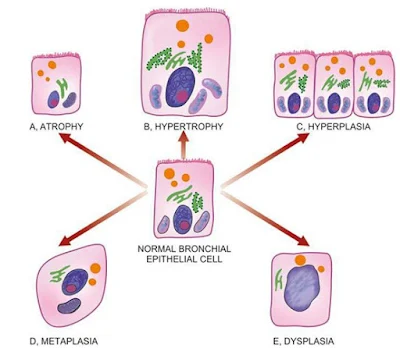CONTENTS
1. Introduction to Pediatrics
2. Normal Growth and its
Disorders – Somatic growth, physical growth, growth disorders,
abnormalities of head size and shape.
2. Development – Normal development,
behavioral disorders, habit disorders and tics.
4. Adolescent Health and
Development – Physical aspect, cognitive and social development, problems
faced by adolescents, role of health care provider.
5. Fluid and Electrolyte
Disturbances – Composition of body fluids, deficit therapy, sodium,
potassium, calcium, magnesium, acid-base disorders.
6. Nutrition –
Macronutrients, normal diet, undernutrition, management of malnutrition.
7. Micronutrients in Health
and Disease – Fat and water soluble vitamins, minerals and trace elements.
8. Newborn Infants –
Resuscitation of a newborn, routine care, thermal protection, fluid and
electrolyte management, kangaroo mother care, breastfeeding, care of low birth
weight babies, infection in the neonates, perinatal asphyxia, respiratory
distress, jaundice, congenital malformations, follow up of high risk neonates,
metabolic disorders, effects of maternal condition on fetus and neonates.
9. Immunization and
Immunodeficiency – Immunity, primary immunodeficiency disorders,
immunization, commonly used vaccines, vaccine administration, immunization
programs, immunization and special circumstances.
10. Infections and
Infestations – Fever, common viral infections, viral hepatitis, HIV, common
bacterial infections, tuberculosis, fungal infections, protozoal infections,
congenital and perinatal infections, helminthic infestations.
11. Disease of
Gastrointestinal System and Liver – Gastrointestinal disorders, acute
diarrhea, persistent diarrhoea, chronic diarrhoea, gastrointestinal bleeding,
disorders of hepatobiliary system, acute viral hepatitis, liver failure,
chronic liver disease.
12. Hematological Disorders – Anemia,
approach to hemolytic anemia, hematopoietic stem cells transplantation,
approach to a bleeding child, thrombotic disorders, leucocytosis, leucopenia.
13. Otolaryngology – Disease
of the ear, nose, sinuses, oral cavity, pharynx, larynx, trachea, salivary
glands.
14. Disorders of Respiratory
System – Common respiratory symptoms, investigations for respiratory
illness, respiratory tract infections, acute lower respiratory tract
infections, bronchial asthma, foreign body aspiration, lung abscess,
bronchiectasis, cystic fibrosis, ARDS.
15. Disorders of CVS –
Congestive cardiac failure, congenital heart disease, acyanotic congenital
heart defects, cyanotic heart disease, obstructive lesions, rheumatic fever and
heart disease, infective endocarditis, myocardial disease, pericardial disease,
systemic hypertension, pulmonary arterial hypertension, rhythm disorders,
preventing adult cardiovascular disease.
16. Disorders of Kidney and
Urinary Tract – Renal anatomy and physiology, diagnostic evaluation, acute
glomerulonephritis, nephrotic syndrome, chronic glomerulonephritis, urinary
tract infections, acute kidney injury, chronic kidney disease, renal
replacement therapy, disorders of renal tubular transport, enuresis, congenital
abnormalities of kidney and urinary tract, cystic kidney disease.
17. Endocrine and Metabolic
Disorders – Disorders of pituitary gland, thyroid gland, calcium
metabolism, adrenal glands, obesity, disorders of gonadal hormones, diabetes
mellitus.
18. Central Nervous System –
Approach the neurological diagnosis, seizures, febrile convulsions, epilepsy,
coma, acute bacterial meningitis, tuberculous meningitis, encephalitis and
encephalopathies, intracranial space occupying lesions, subdural effusion,
hydrocephalus, neural tube defects, acute hemiplegia of childhood, paraplegia
and quadriplegia, ataxia, cerebral palsy, degenerative brain disorders, mental
retardation, neurocutaneous syndromes.
19. Neuromuscular Disorders –
Approach to evaluation, disorders affecting anterior horn cells, peripheral
neuropathies, acute flaccid paralysis, neuromuscular junction disorders, muscle
disorders.
20. Childhood Malignancies –
Leukemia, lymphoma, brain tumors, retinoblastoma, neuroblastoma, wilms tumors,
malignant tumors of the liver, histiocytoses, oncologic emergencies,
hematopoietic stem cells transplantation.
21. Rheumatological Disorders –
Arthritis, systemic lupus erythematosus, juvenile dermatomyositis, scleroderma,
mixed connective tissue disease, vasculitides.
22. Genetic Disorders –
Chromosomal disorders, single gene disorders, polygenic inheritance, therapy of
genetic disorders, prevention of genetic disorders.
23. Inborn Errors of
Metabolism – Suspecting an inborn error of metabolism, aminoacidopathies,
urea cycle defects, organic acidurias, defects of carbohydrate metabolism, mitochondrial
fatty acid oxidation defects, lysosomal storage disorders.
24. Eye Disorders –
Pediatric eye screening, congenital and developmental abnormalities, acquired
eye diseases.
25. Skin Disorders – Basic
principles, genodermatoses, nevi, exczematous dermatitis, disorders of skin
appendages, disorders of pigmentation, drug eruptions, infections, diseases
caused by arthropods.
26. Poisoning, Injuries and
Accidents – Poisoning, common poisoning, envenomation, injuries and
accidents.
27. Pediatric Critical Care –
Assessment and monitoring of a seriously ill child, pediatric basic and
advanced life support, shock, mechanical ventilation, nutrition in critically
ill children, sedation, analgesia and paralysis, nosocomial infections in PICU,
transfusions.
28. Common Medical Procedures –
Obtaining blood specimens, removal of aspirated foreign body, nasogastric tube
insertion, venous catheterization, capillary blood (hell prick), umbilical vessel
catheterization, arterial catheterization, intraosseous infusion, lumbar puncture,
thoracocentesis, abdominal paracentesis or ascetic tip, catheterization of
bladder, peritoneal dialysis, bone marrow aspiration and biopsy, liver biopsy,
renal biopsy.
29. Rational Drug Therapy
30. Integrated Management of
Neonatal and Childhood Illness
31. Rights of Children
ABOUT BOOK
|
Name Book
|
GHAI Essential Pediatrics 8th edition
|
Author/ Editior
|
Vinod K Paul, Arvind Bagga
__________Ramesh Agarwal, Naveen Sankhyan, Vandana Jain, Tushar R
Godbole, Vijayalakshmi Bhatia, Kamran Afzal, Rakesh Lodha, Anuja Agarwal,
Ashima Gulati, Ashok K Deorari, Aditi Sinha, Surjit Singh, Tanu Singhal, SK
Kabra, Anshu Srivastava, Barath Jagadisan, SK Yachha, Tulika Seth, Sandeep
Samant, Grant T Rohman, Jerome W Thompson, R Krishna Kumar, R Tandon, Manuj
Raj,, PSN Menon, Anurag Bajpai, Kanika Ghai, Veena Kaira, Sheffali Gulati,
Sadhna Shankar, Rachna Seth, Neerja Gupta, Madhulika Kabra, Neena Khanna,
Seemab Rasool, P Ramesh Menon, Manjunatha Sarthi, Sidharth Kumar Sethi, Anu
Thukral, AK Patwari, S Aneja, Rajeev Seth.
|
Type
|
pdf.
|
Size
|
67.60 MB
|
Pages
|
768
|
Pages type
|
Colored
|
Quality
|
Good
|














